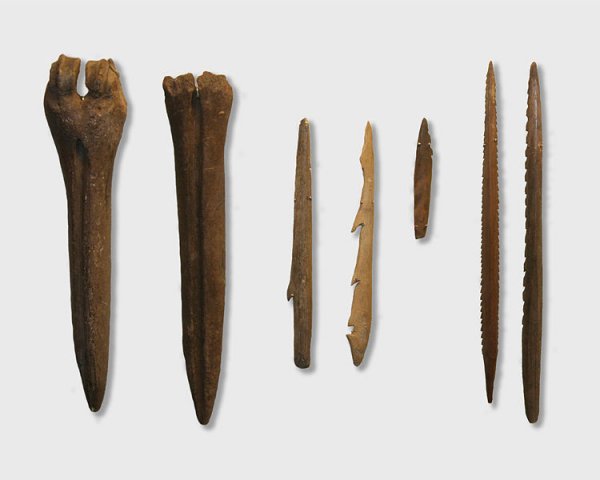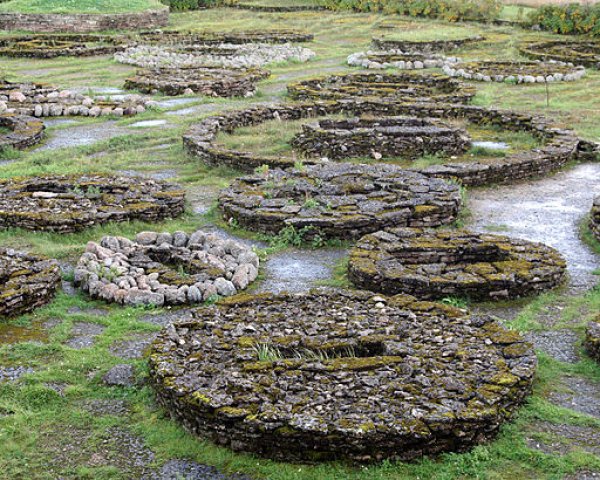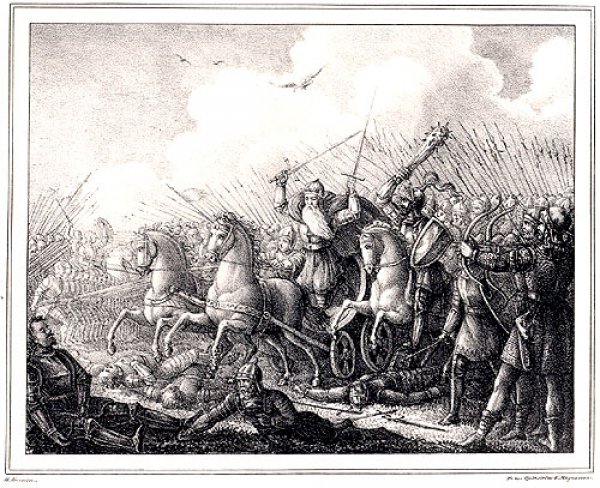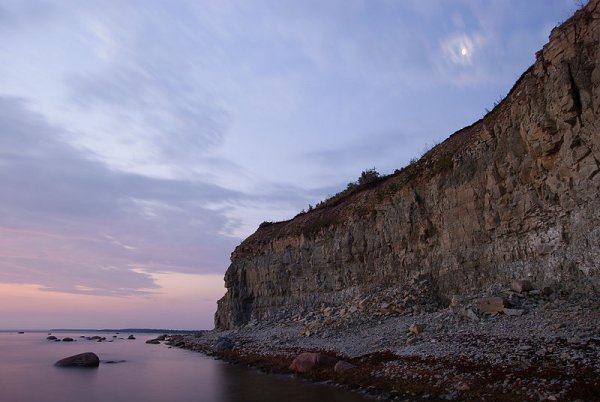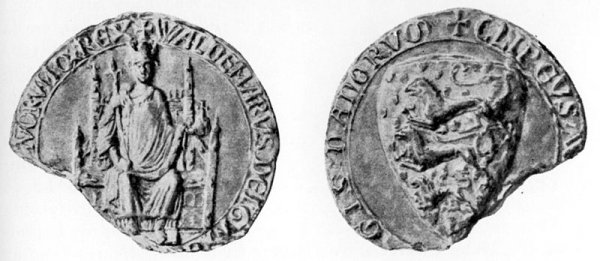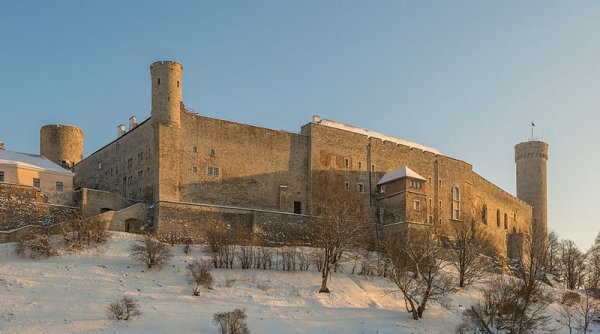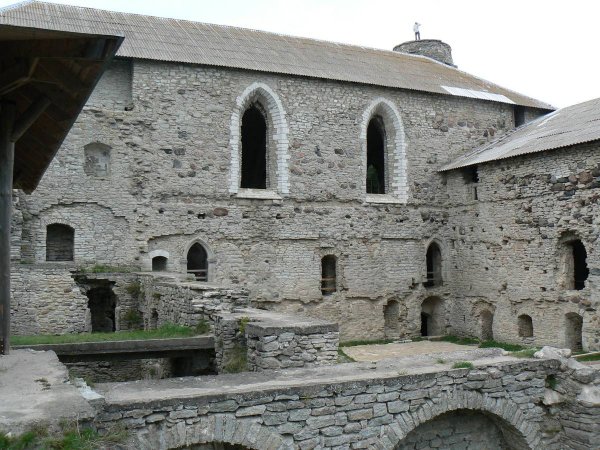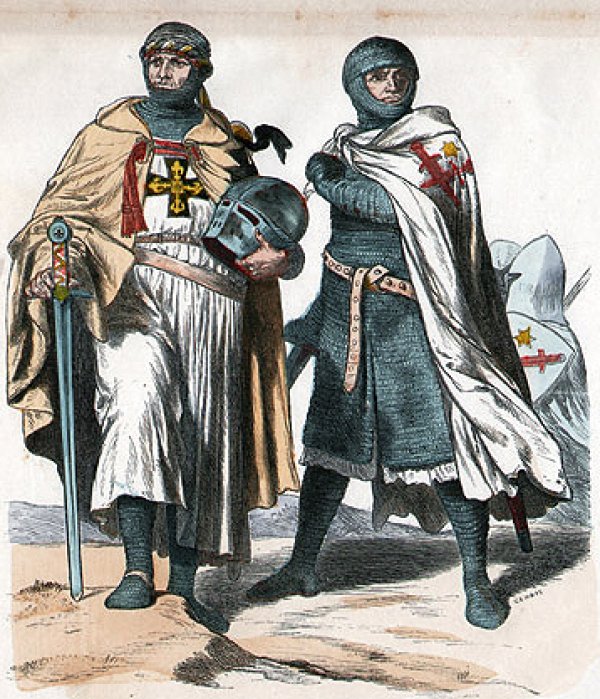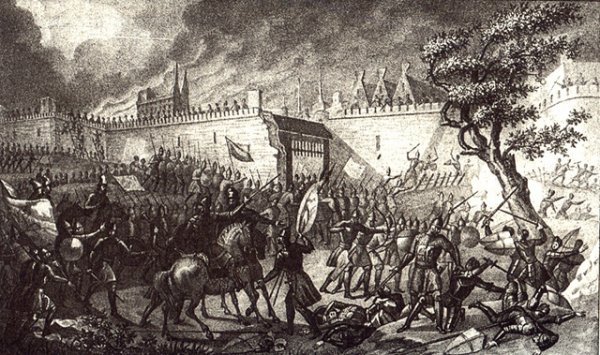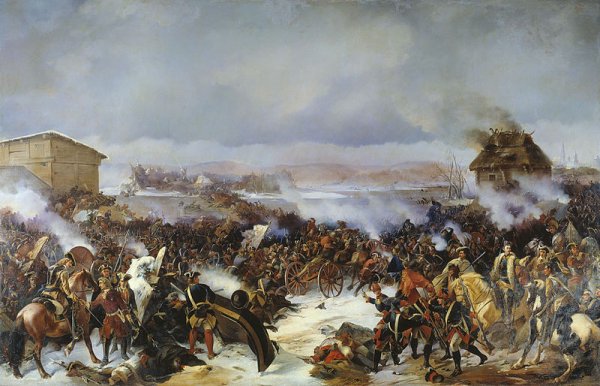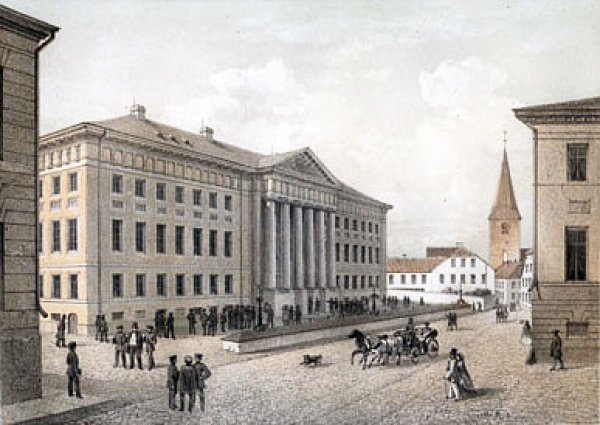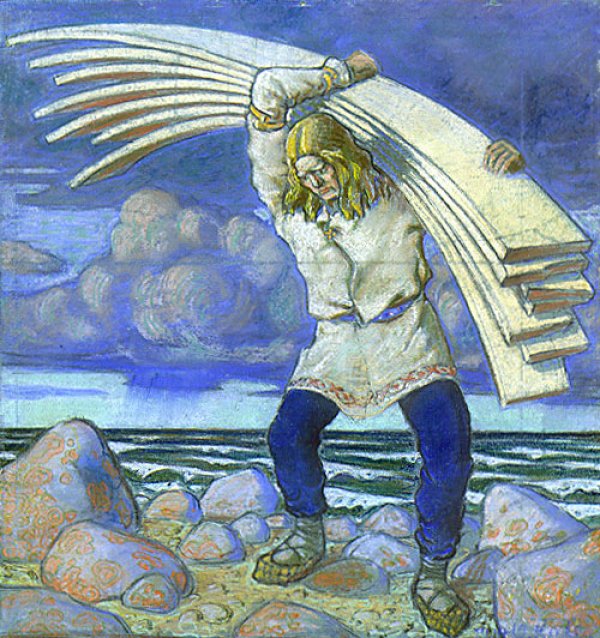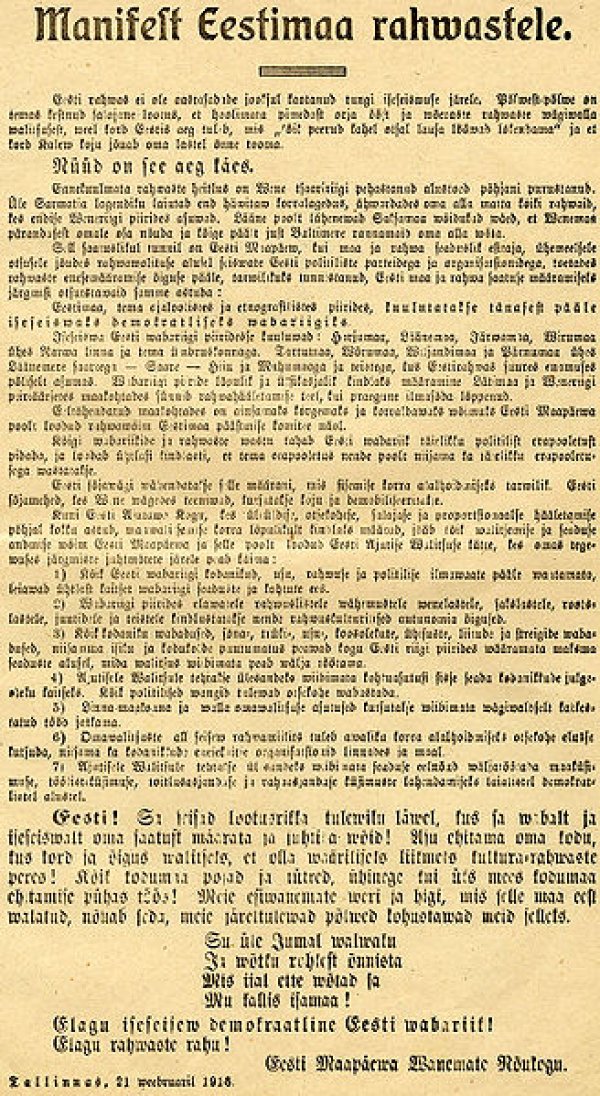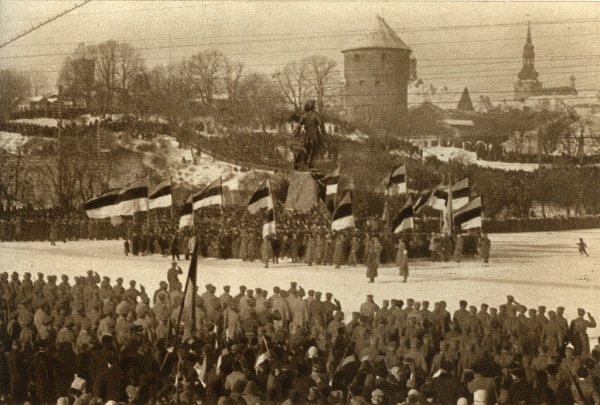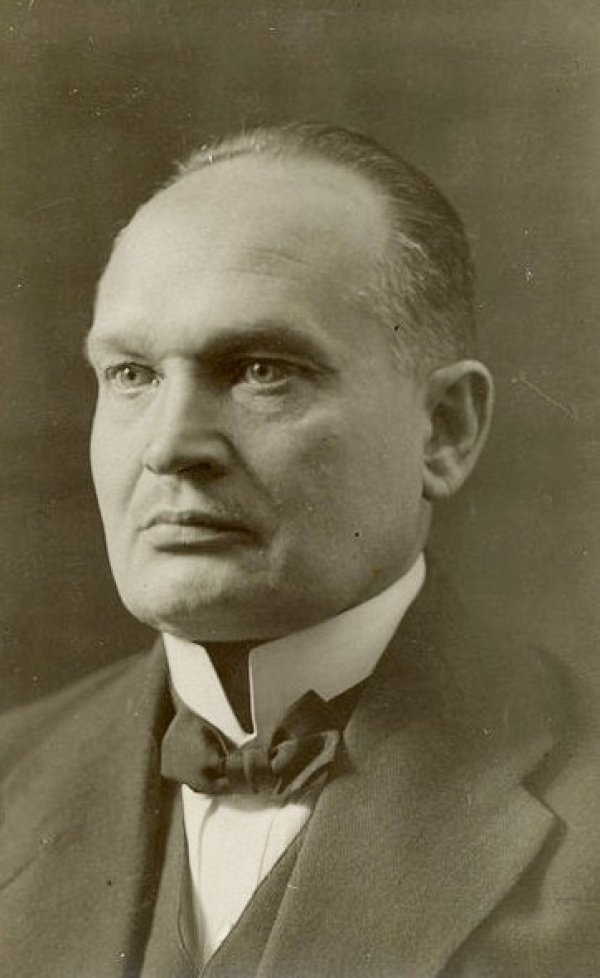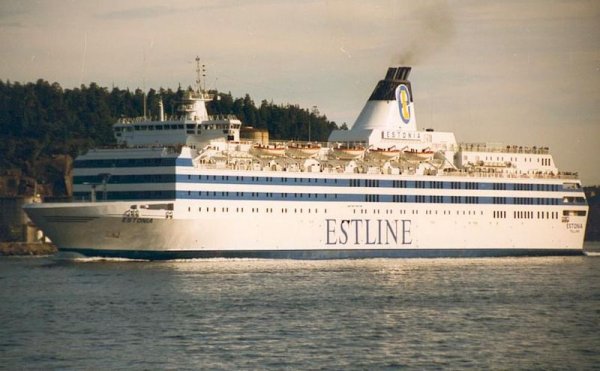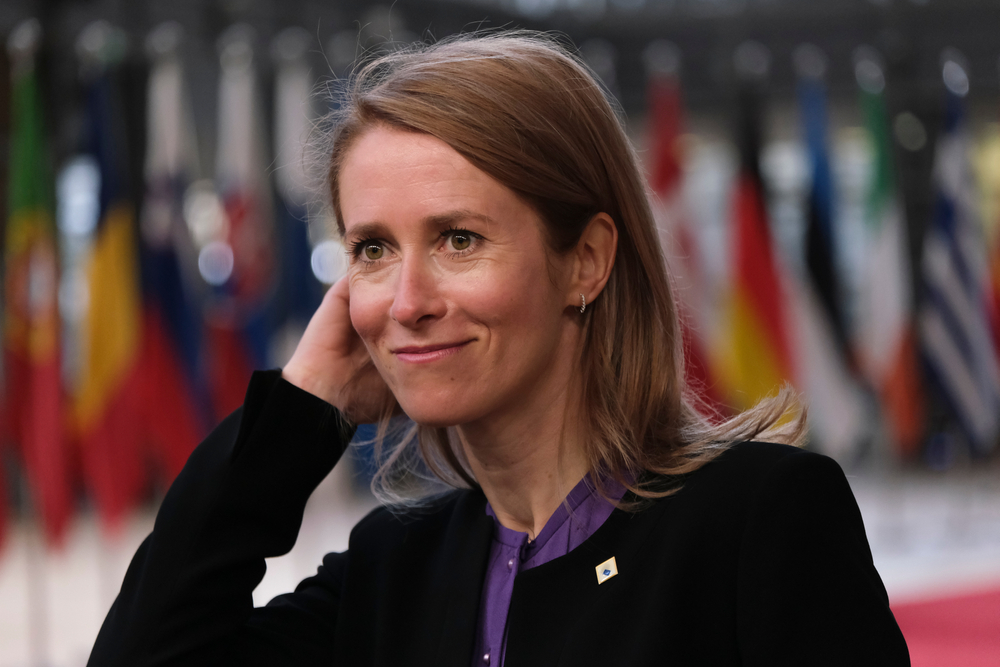| Date | Event |
|---|---|
| 11,000–9000 BCE | The ice from the last glacial era melts, allowing human settlement. Migrants move in from the south and establish the Pulli settlement, on the banks of the Pärnu River. |
| 6500 BCE | The Kunda establish hunting and fishing communities across the north of the region. The Kunda domesticate dogs and use them in the hunting of elk. |
| 5300–1750 BCE | The Narva culture succeeds the Kunda throughout the Baltic region. The Narva are primarily fishers, hunters, and gatherers, but later introduce animal husbandry to the region. An unsuccessful attempt to domesticate the wild boar is made. |
| 500 BC | The first iron pots are imported into the region. Local people later develop the ability to smelt iron from ore discovered in lakes and marshes. |
| Date | Event |
|---|---|
| 100 CE | The Roman senator, Tacitus, uses the name Estonia to describe the region for the first time. |
| 100–600 | The majority of Estonians live in coastal settlements along the Baltic Sea shore. They practice a religion centered on worship of the wind. |
| 750 | Estonian warriors battle alongside the Swedes against the Danes in the Battle of Bråvalla. Sigurd Ring, king of Sweden, defeats the Danes, although there are heavy losses among his Swedish and Estonian troops. |
| 790 | The Viking era begins. Most Estonian Vikings are drawn from the Oeselians, who inhabit the Baltic Sea island of Saaremaa. |
| 800 | The Swedish king, Ingvar, invades Estonia in retribution for raids on Swedish ships by pirates based on the Estonian coastline. The Estonians assemble a large army in the interior of the country. Ingvar is defeated and killed in battle. |
| 967 | Oeselian Vikings raid a Norwegian ship carrying Queen Astrid and her son, the future king of Norway, Olaf Tryggvason. Many of the crew are taken into slavery. Olaf is returned to his homeland six years later when a Norwegian tax collector identifies him in an Estonian market and buys his freedom. |
| 972 | The Oeselians defeat Icelandic Vikings in a fierce sea battle over the island of Saaremaa. |
| 1008 | A Norwegian party led by Olaf the Holy, future king of Norway, makes a surprise landing on Saaremaa. Oeselian forces recover from the shock and repel his advances. |
| 1030 | The Russian prince of Novgorod enters Estonian territory and establishes the town of Juryev. The invaders construct a fort to defend the settlement and demand tribute from the local Estonians. |
| 1061 | Estonian forces sack Juryev and retake the territory. The ruined city later becomes the site of Tartu, the second largest city in the country. |
| 1187 | Oeselian Vikings record their greatest victory when they destroy Sigtuna, then-capital of Sweden. |
| Date | Event |
|---|---|
| 1206 | In response to the frequent raids by Oeselian Vikings, the Danes make a series of raids on Estonian coastal territories. Their greatest success comes when King Valdemar II leads an army that conquers Saaremaa. The Danes subsequently lay claim to the entire Estonian territory. |
| 1208 | Under orders from the Pope, the Baltic crusades are initiated in mainland Estonia. The aim is to bring Christianity to the indigenous peoples. German crusaders are tasked with introducing Christianity to Estonia. Virtually all of the country converts within 20 years. |
| 1219 | Following his success at the Battle of Lyndanisse, King Valdemar II leads an army of crusaders that conquers all of northern Estonia. The victorious army builds Toompea Castle on a prominent area of highland to defend their position. The capital city of Tallin starts to develop around the castle, with the name derived from the Estonian Taanilinnus (Castle of the Danes). |
| 1220 | Control of the country is divided between the Danes in the north and the Livonian Brothers of the Sword in the south. The Brotherhood, which is largely Germanic, builds a castle at Fellin to defend its territory. The name Livonia is given to a broad territory along the eastern coast of the Baltic Sea, including all of Estonia. |
| 1227 | The Livonian Brothers of the Sword conquer all of the Danish territories in Northern Estonia, but later sign the Treaty of Stensby with King Valdemar II. The treaty cedes the Estonian territory back to the Danes, where the king rules it as the Duchy of Estonia. |
| 1230–1330 | The Danes show limited interest in Estonia, but use the territory as a base for occasional incursions into Russia. |
| 1332 | The death of Danish King Christopher II results in political turmoil in Denmark. The turmoil is felt in Estonia, with civil unrest in the north and south. |
| 1343 | During the St. George’s Night Uprising, the indigenous Estonian population makes an unsuccessful attempt to overthrow the Danes. |
| 1346 | The Duchy of Estonia is sold to the German Teutonic Order for 19,000 silver marks. The title "Duke of Estonia" falls into disuse. |
| 1346–1410 | Estonia and its neighboring territory of Latvia are controlled by the German Teutonic Order, and are collectively referred to as Terra Mariana (Land of Mary). |
| 1410 | The Teutonic Order is defeated in the Battle of Grunwald, initiating a period of decline. |
| 1410–1558 | The decline of the Teutonic Order sees attempted invasions from other European nations, including two unsuccessful military campaigns by Russia. The constant battles for territory, referred to as the Livonian wars, take a huge toll on the local population, which falls to 120,000. This is less than half the population existing at the time the Danish occupation begins. |
| Date | Event |
|---|---|
| 1558 | Estonian nobles approach Sweden for protection in exchange for control of the territory. |
| 1583 | The Livonian wars come to an end as the Swedes defeat the Russians at the Battle of Lode. A peace treaty is signed with Russia and the Swedes take control of Estonia, while allowing the nobles to retain many of their former privileges. |
| 1583–1680 | The Swedes control Estonia and divide the land into fiefdoms. Most Estonian land comes under private ownership, with the Swedes making it available to Baltic Germans. German nobility gains significant power in Estonia’s economic and political life. |
| 1680 | The Swedish king, Charles II, introduces “The Great Reduction.” To increase the dwindling state finances, all holdings that have gone into private possession since the beginning of Swedish rule are reduced. The policy is extremely unpopular, but land transfers and economic reform for Estonian farm workers occur relatively peacefully. |
| 1700 | The Battle of Narva is fought on Estonian territory as part of the Great Northern War between Sweden and Russia. Sweden initially forces Russian forces out of the country. |
| 1710 | Sweden’s defeat sees Estonia incorporated into the Russian Empire. |
| 1739 | The Bible is translated into Estonian. |
| Date | Event |
|---|---|
| 1850 | The Estonian Age of Awakening begins. The abolition of serfdom and the availability of education to the native Estonian-speaking population leads to the development of an Estonian nationalist movement. Initially, it is a cultural renaissance that bosters Estonian language, literature, theatre, and professional music, which ultimately form an Estonian national identity. |
| 1862 | Kalevipoeg (Kalev's Son) is published. The poem by Friedrich Reinhold Kreutzwald is based on Estonian folklore of a giant that appears in folk songs and the nation’s oral history. |
| 1869 | The first national song festival is organized. |
| 1890 | The Russian Empire imposes a Russification policy. Estonian nationalism intensifies as a result. |
| 1891 |
Postimees (The Postman) becomes Estonia’s first daily newspaper and quickly gains a wide readership among the country’s intellectuals. |
| 1908 | The first cinema opens in Estonia. |
| 1918 | The Estonian Declaration of Independence is proclaimed by the elders of the Estonian Provincial Assembly. |
| 1918–1920 | The Estonian War of Independence results in a victory for Estonian forces who fight alongside allies from Latvia and the United Kingdom. Estonia proclaims independence from Russia, and a new constitution is drafted for the independent state. |
| 1921 | Estonia and the Soviet Union sign the Tartu Peace Treaty. The independent state becomes a parliamentary democracy and a member of the League of Nations. |
| 1934 | Parliament is disbanded, following unrest due to the global financial crisis. |
| 1934–1937 | Konstantin Päts, who had earlier served as a elected prime minister, organzises a coup d'état with support from the army. He brings stability to the new state that eventually results in a new constitution. |
| 1938 | Under the new constitution, Konstantin Päts becomes the first president of Estonia. |
| 1940 | Estonia declares neutrality during World War II but is occupied by Russian forces. |
| 1941–1944 | German forces take Estonia from the Russians and conscript Estonians into the Nazi German Army. Many Estonians flee overseas to Finland. Some travel as far as the United Kingdom and join the Royal Air Force in their attempts to liberate occupied Estonia. Estonia suffers some of the highest casualties of any nation during the conflict, reducing the population by 25 percent. |
| 1944 | As German forces retreat, Russian forces retake Estonia. Estonia is incorporated into the Soviet Union (USSR) as the Estonian Soviet Socialist Republic (ESSR). Around 80,000 Estonians flee to Finland to avoid life under the Soviets. Gustav Ernesaks, later considered to be the father of modern Estonian choral music, founds the State Academic Male Chorus (RAM). He directs the chorus for the next 30 years. |
| 1946 | The city of Narva is rebuilt as a giant Soviet industrial park. Many thousands of immigrants arrive to work in the region's metal factories and nuclear power plant. |
| 1949 | A guerrilla war is fought between the occupying forces and Estonians known as the Forest Brothers, who operate from bases in the vast Estonian coniferous forests. The war is ended by the mass deportation of over 20,000 Estonians to inhospitable areas of the Soviet Union. |
| 1960s | Some of the deported Estonians are allowed to return to the country. |
| 1975 | To mark the death of Estonian opera singer Georg Ots, the Tallin Music School is named after him. During his career, Ots performs at the Bolshoi Theatre in Moscow and also delivers Estonian folk songs to Russian audiences. |
| 1980 | The sailing regatta for the Moscow Olympic Games is held in Tallin. |
| 1982 | Composer and conductor Eduard Tubin dies in Stockholm. Originally an Estonian, he flees the country after the 1944 Soviet occupation. He is credited with introducing Estonian folk music to an international audience. A museum of his work is later opened in Alatskivi Castle, near his Estonian birthplace. |
| 1987 | The first open protests against Soviet rule occur on the streets of Estonian cities. |
| 1987–1991 |
The Singing Revolution—mass demonstrations that include the spontaneous singing of banned hymns and national songs—takes place simultaneously in Estonia, Latvia, and Lithuania. In one action, called the Baltic Way, more than 2 million people form a 600-kilometer-long (373-mile-long) human chain that stretches through all three countries. |
| 1991 | Estonians vote to become independent of the USSR. Independence is granted later in the year. |
| 1992 | Mart Laar becomes the first prime minister of the newly independent state. A new currency, the Kroon, is introduced. |
| 1994 |
The last units of the Russian army leave the country. Estonia joins NATO. September. The cruise ship MS Estonia sinks in the Baltic Sea. More than 850 passengers die, making it one of the worst maritime disasters of the 20th century. The tragedy leads to international changes in safety regulations and life raft design. |
| 1998 |
Changes are made to citizenship laws to encourage the Russian-speaking minority to become Estonian. More than 6,500 Russian children born in Estonia since its 1991 independence become citizens. |
| Date | Event |
|---|---|
| 2000 |
Veljo Tormis retires from producing compositions. At the time, he is regarded as one of the greatest living choral composers. During his career, he produces more than 500 choral songs, largely based on Estonian folklore. |
| 2001 | Tanel Padar and Dave Benton, together with hip-hop band 2XL, win the Eurovision Song Contest. Estonia becomes the first of the previously occupied Soviet Union countries to win the contest. |
| 2002 | Following the previous year’s success, Estonia earns the right to host the Eurovision Song Contest. The event in Tallin is won by Latvia. |
| 2003 |
August. The popular internet-based video chat service called Skype was founded by Estonian developers Zahti Heinla, Priit Kasesalu and Jaan Tallinn, Danish developer Janus Friis, and Sweden's Niklas Zennstrom. |
| 2004 |
Estonia is admitted into the European Union. In order to reverse a trend of declining population, a law is passed to pay women up to US$1,560 per month—more than double the average monthly wage of US$650—for 15 months to have children. |
| 2005 | Estonia and Russia sign a treaty to finalise the border between the two countries. Later in the year, Estonia becomes the first country in the world to use internet voting in a national election. |
| 2007 |
The Estonian government passes a law prohibiting the display of monuments glorifying Soviet rule. A Red Army war memorial in Tallinn is removed, despite protests from ethnic Russians living in the country. Ethnic Russians are accused of leading riots in response to the relocation of other Soviet-era war memorials. September. A cyber attack is launched against the websites of key Estonian institutions, including the parliament, banks, ministries, and the media. International observers regard the event as the most sophisticated cyber attack ever launched against a sovereign state. Estonians blame the Russian government, but it proves impossible to determine the exact source of the attack. The scale of the event causes military organizations around the world to reconsider the importance of network security in modern warfare. |
| 2011 |
The euro is adopted as the country's official currency. |
| 2012 |
The European Agency for the operational management of large-scale information technology systems in the area of freedom, security, and justice is based is Tallin. |
| 2013 |
April. Trade declines over last year, with a 2 percent drop in exports and 3 percent drop in imports, influenced by a decrease in mineral fuels trading. |
| 2014 | February. Ending a 20+ year dispute, Estonia and Russia sign a treaty that declares their position on a joint border. |
| 2015 |
March. Prime Minister Taavi Roivas's Reform Party emerges as the winner in parliamentary elections. September. A detained border guard held in Russia is returned in exchange for a Russian held in the country since 2012 amid charges of spying for Moscow. |
| 2016 | The population grows by 1,850. |
| 2017 | In an effort to combat what it sees as Russian aggression, NATO sends 800 British troops to Estonia. Other troops are deployed to surrounding Baltic nations as part of a major NATO mission. |
| 2018 | A new government is sworn in, led by a party supported by the country's ethnic Russian minority. The coalition reaffirms NATO and EU commitments. |
| 2019 |
Fragments of about 100 Viking swords are discovered in northern Estonia, dating from the middle of the 10th century and the largest find of Viking swords in the country to date. |
| 2020 |
February 27. Estonia confirms its first case of the deadly COVID-19 virus, which is declared a pandemic by the World Health Organization about two weeks later. |
| 2021 |
January. Reform party leader, Kaja Kallas, becomes the country's first female prime minister after parliamentary elections. She is the daughter of former Estonian prime minister, Siim Kallas, who also headed the Reform party. |


